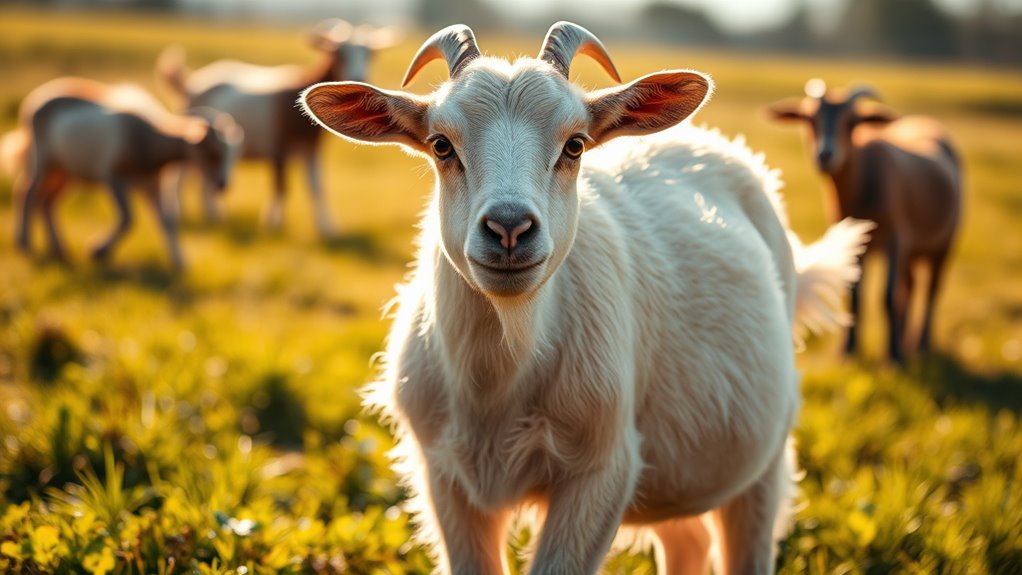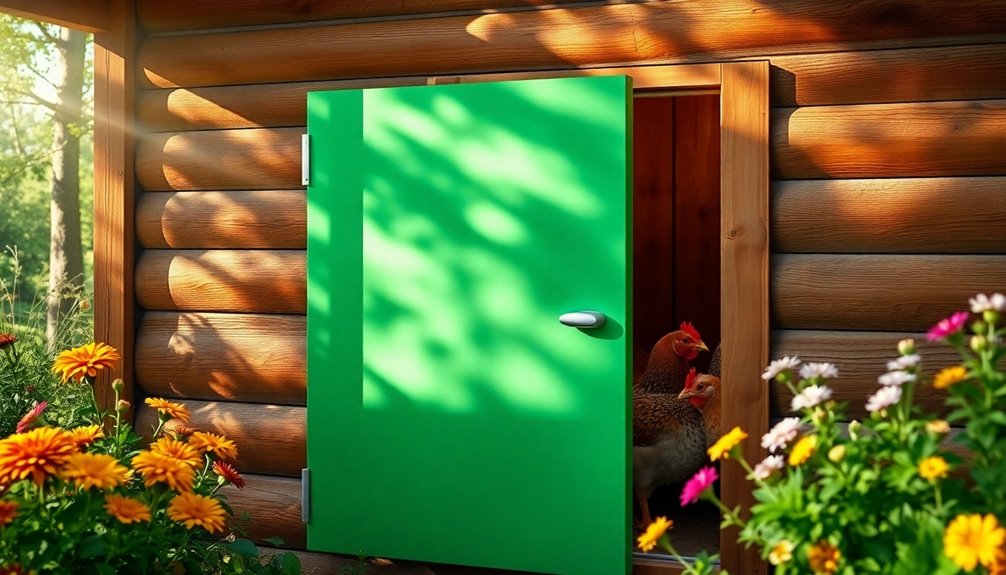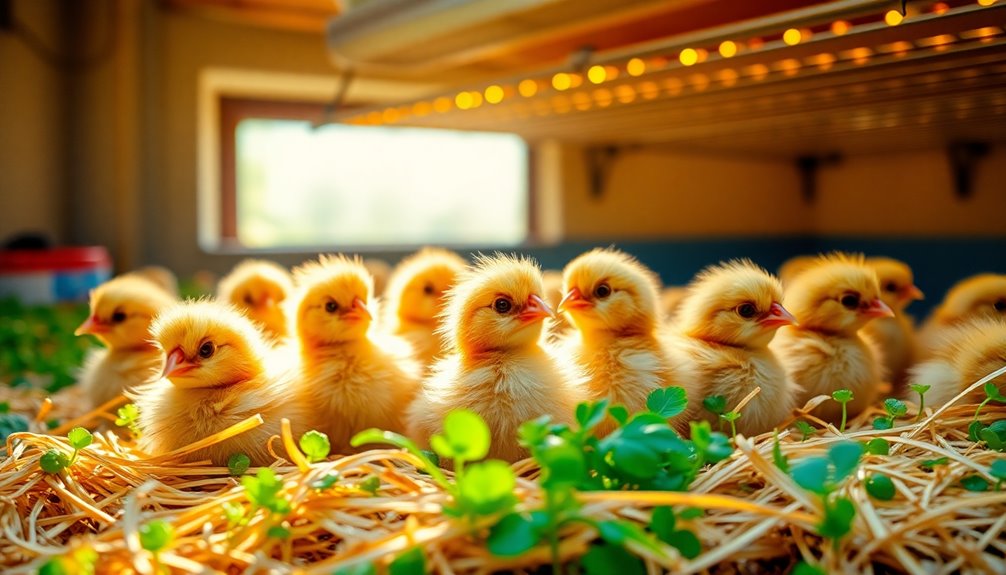To detect signs of pregnancy in goats early, watch for behavioral changes like increased appetite and social withdrawal. Physically, you'll notice a rounded abdomen after two weeks and changes in udder size. You can use diagnostic methods like ultrasonography and hormone tests for confirmation. As the pregnancy progresses, watch for late signs such as weight gain and posture changes. If you're eager to learn about pre-labor signs and more detailed indicators, there's plenty more to explore.
Key Takeaways
- Increased appetite is often the first noticeable sign of pregnancy in does.
- Behavioral changes include a calmer demeanor and reduced aggression towards others.
- Social withdrawal may occur, with does becoming less interactive in their environment.
- Physical signs include a rounded abdomen, especially prominent after two weeks of gestation.
- Early udder development, known as "bagging up," indicates hormonal changes associated with pregnancy.
Early Behavioral Changes in Pregnant Does

When you observe early behavioral changes in pregnant does, you'll notice distinct signs that indicate their condition.
An increased appetite is often the first change you'll see, as they begin to eat more frequently. Alongside this, pregnant does tend to be calmer and less aggressive than usual.
An early sign of pregnancy in does is an increased appetite, accompanied by a calmer demeanor and reduced aggression.
You might also find them withdrawing socially, becoming less interactive with their surroundings. As they progress, some does may start exhibiting nesting behavior, gathering bedding or rearranging their space.
Additionally, you'll notice a reduction in their activity levels, as they avoid energetic movements.
These changes are crucial indicators of their pregnancy and help you ensure they receive the attention and care they need during this important time.
Physical Signs of Pregnancy in Goats
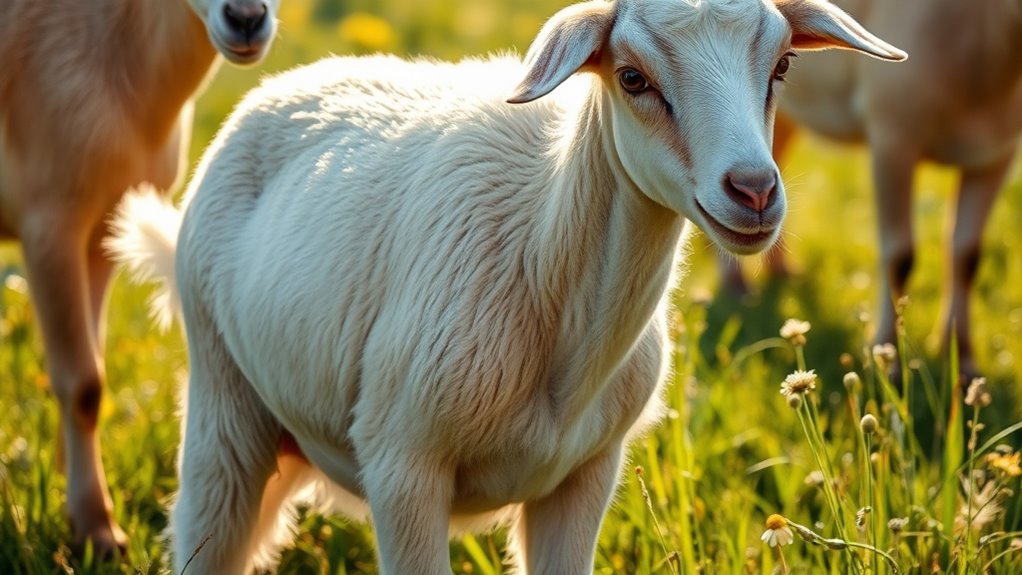
As you monitor your pregnant does for behavioral changes, it's equally important to recognize the physical signs of pregnancy that indicate their condition.
You'll notice their abdomen becoming more rounded and prominent as they gain weight, especially after two weeks. Around three months in, you might even feel the kids moving.
Udder development is another key sign; seasoned does may start "bagging up" and show increased teat size.
Keep an eye on the ligaments near the tail, as they soften closer to kidding. You may also observe vulva relaxation and discharge changes.
As labor approaches, watch for changes in body posture, like back arching and waddling, indicating that your doe is preparing to give birth.
Diagnostic Methods for Detecting Pregnancy

Detecting pregnancy in goats can be accomplished through several effective diagnostic methods that cater to different needs and timelines.
Ultrasonography is a popular choice, allowing you to spot pregnancy as early as 30 days with transabdominal ultrasound.
Ultrasonography enables early pregnancy detection in goats, with transabdominal ultrasound identifying pregnancies as early as 30 days.
For hormone-based tests, measuring progesterone or estrone sulfate levels in blood or milk can provide insight, though they may not confirm pregnancy definitively.
The Pregnancy-Specific Protein B (PSPB) test offers a reliable confirmation through serum or plasma analysis.
Radiography can help after 70 days but is less practical due to cost.
Each method has its pros and cons, so consider your herd management needs and consult a veterinarian for the best approach to detect pregnancy accurately.
Late Pregnancy Indicators to Watch For

Throughout the late stages of pregnancy in goats, you'll notice several key indicators that signal the approaching birth of kids. The doe's abdomen will appear larger and more rounded, and as the kids drop, the sides may look sunken.
You might also see early udder development, though it won't be fully formed until after kidding. Expect noticeable weight gain, particularly in the last trimester, and watch for changes in posture due to the growing fetuses.
Behavioral changes are common too; does may become restless, and their appetite could fluctuate. Keeping an eye on these signs will help you prepare for the upcoming birth and ensure a smooth kidding experience.
Regular check-ups can further help manage any potential complications.
Pre-Labor Signs to Anticipate
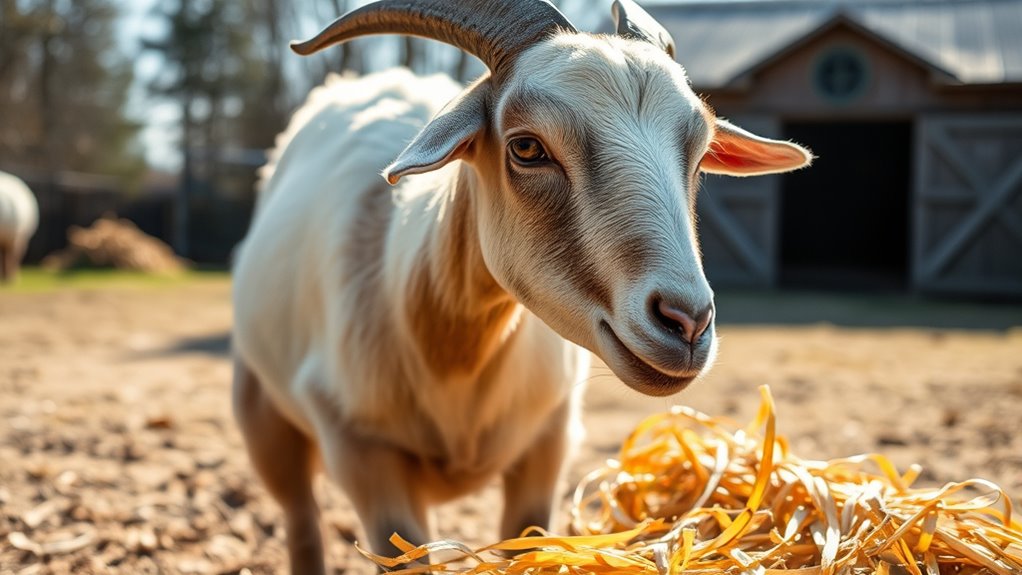
You'll start noticing distinct pre-labor signs as your doe nears the end of her pregnancy. Look for a thick mucus discharge from the vulva, which signals that labor is approaching.
You might also notice her pelvic ligaments loosening, making her vulva appear puffy and flabby. As the kids shift into position, her sides may become hollow, and her hip bones will become more pronounced.
Expect increased discomfort; she may stretch, yawn, or grind her teeth. Nesting behavior intensifies, with her pawing at the ground or gathering bedding.
Finally, vocalizations will increase, indicating her anxiety and readiness for labor. Keep a close eye on these signs to ensure a smooth birthing process.
Frequently Asked Questions
Can Stress Affect a Goat's Pregnancy Signs?
Yes, stress can definitely affect a goat's pregnancy signs.
When your goat experiences stress, you might notice changes in appetite, behavior, and overall health, which can mask typical pregnancy indicators.
Increased rectal temperature and reduced feed intake are common responses to stress, complicating your ability to detect pregnancy early.
Managing stress is crucial for maintaining your goat's well-being and ensuring accurate observations of any pregnancy signs.
How Long Is a Goat's Gestation Period?
A goat's gestation period is like a ticking clock, typically lasting between 145 to 155 days, with an average around 150 days.
Various factors, such as breed size and parity, influence this duration. Smaller breeds might deliver a bit sooner, often about five days earlier.
If you're keeping track, using a gestation calculator based on breeding dates can help you estimate the due date accurately, ensuring you're prepared for the arrival of kids.
What Breeds Are More Prone to Pregnancy Complications?
When considering breeds prone to pregnancy complications, Boer goats top the list due to their tendency to layer fat, increasing pregnancy toxemia risk.
High-producing dairy breeds are also vulnerable, facing issues like lactational ketosis.
Older does generally struggle with fertility and complications, while young does can encounter dystocia if bred too early.
It's crucial to monitor these breeds closely for any signs of potential issues throughout their pregnancy journey.
Can Goats Experience False Pregnancies?
Oh sure, goats can experience false pregnancies—because why not add a little drama to their lives?
These capricious creatures can sometimes act as if they're expecting, complete with a swollen belly and udder.
But guess what? No baby in sight! It's like they're the divas of the barnyard, demanding attention without delivering.
How Can I Support a Pregnant Doe's Nutrition?
To support a pregnant doe's nutrition, focus on providing an energy-dense diet with high-quality forages and gradual grain supplements, especially in late pregnancy.
Ensure her diet contains 14% to 16% protein for fetal development and milk production.
Don't forget mineral and vitamin supplements tailored for goats.
Keep fresh water available at all times, and monitor her body condition to adjust her feeding as needed throughout different stages of pregnancy.
Conclusion
As you keep a close eye on your does, the excitement builds with each subtle change. Will you catch the telltale signs of pregnancy? The flutter of movement, a change in appetite, or a gentle nudge from a growing belly might hint at new life on the way. Stay alert, because soon you could witness the miracle of birth unfold right before your eyes. The anticipation is palpable—your herd's future could be just around the corner.

